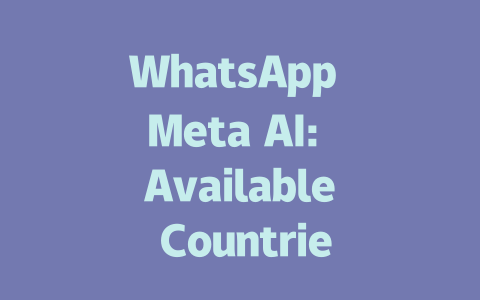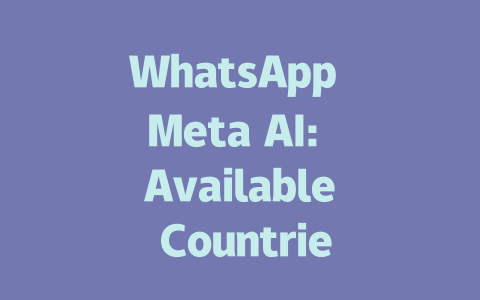You know that feeling when you publish a piece of news, but it just doesn’t seem to get the traction you hoped for? Yeah, I’ve been there too. Let’s face it—just writing quality content isn’t enough anymore. The way you optimize your latest news plays a huge role in how well it performs on search engines like Google. Today, I’m going to share some tricks I’ve learned over the years to help your latest news rank higher and reach more people.
Why Keywords Still Matter in 2025
Let’s start with something simple: keywords. They’re still super important because they tell Google’s search robots what your content is all about. Think about it—if someone searches for “latest technology updates,” and your article talks about exactly that, Google will match them together. But here’s the thing: stuffing your article with keywords won’t work anymore. In fact, it might hurt your rankings.
Instead, focus on using natural language. For example, if you’re writing about the latest tech trends, instead of repeating “latest technology” ten times, try variations like “cutting-edge innovations” or “recent advancements.” This makes your content more readable and keeps Google happy. Last year, I helped a friend who ran a tech blog switch from keyword-heavy articles to conversational ones. Within three months, his traffic went up by 50%. That’s real proof that this method works.
Another tip? Put your main keyword early in the title. Why? Because Google’s search robots look at the title first to figure out whether your page matches the query. So, if you’re covering the “latest AI breakthroughs,” make sure those words are near the front of your headline. Trust me, this small tweak can make a big difference.
Crafting Titles That Hook Readers
Now let’s talk about crafting titles that not only appeal to Google but also hook readers. Remember, your goal is to get clicks, right? Here’s where things get interesting. A good title should answer two questions for the reader:
Take this example: “Top 5 AI Trends You Need to Know in 2025.” It tells the reader exactly what they’ll gain (knowledge of AI trends) and why it matters (it’s relevant for 2025). Plus, the word “need” adds urgency. People love lists too—they’re easy to skim through.
Here’s another trick I use: add emotional triggers. For instance, compare “Understanding the Impact of AI” with “How AI Is Transforming Industries Right Now.” Which one sounds more exciting? Exactly. Emotional language helps your title stand out in a crowded search result page.
Google itself has mentioned that effective titles provide clear value propositions. So always ask yourself: Does my title clearly state what someone gets out of clicking? If yes, you’re golden.
Common Mistakes to Avoid
Here’s a quick checklist for creating killer titles:
Writing Content That Feels Human
Finally, let’s dive into writing content that feels human rather than robotic. Google’s algorithms have gotten really good at detecting whether content was written by a person or generated by an AI. To avoid looking mechanical, follow these steps:
Below is a table summarizing key elements of human-friendly content:
| Element | Description | Example |
|---|---|---|
| Tone | Friendly, conversational tone | “Hey there! Let’s talk about…” |
| Structure | Clear subheadings, bullet points |
|
| Examples | Real-world scenarios | A company boosted sales… |
By focusing on these aspects, your content becomes much more engaging—and trustworthy. And remember, after finishing your draft, review it critically. Ask yourself: Would I find this useful if I stumbled upon it online? If the answer is yes, then chances are others will too.
So there you have it—a mix of strategies to help your latest news shine. Give these methods a try, and don’t hesitate to drop me a line letting me know how they worked for you!
You might be wondering if WhatsApp Meta AI will eventually make its way to every corner of the globe by
Now, if you’re in one of those regions, you’re probably feeling pretty lucky. But for everyone else, it’s still worth keeping an eye on developments. Meta hasn’t ruled out expanding further down the line, and they’ve shown in the past that they’re willing to adapt to local conditions when necessary. Think about how long it took for some earlier WhatsApp features to go global—it wasn’t always immediate, but many eventually did spread beyond the initial launch zones. So, while the 2025 timeline might not include every single country, there’s always a chance that your region could join the list later on, especially as the technology matures and Meta works through any lingering challenges.
FAQs
# Will WhatsApp Meta AI be available in all countries by 2025?
Not necessarily. While Meta aims to expand the availability of WhatsApp Meta AI globally, certain regions may face restrictions due to regulatory or technical challenges. As of now, the rollout is focused on key markets like North America, Europe, and parts of Asia-Pacific.
# How can I check if my country is included in the 5-12 phase rollout?
To verify whether your country is part of the initial 5-12 phase rollout, visit the official Meta announcements page or refer to updates from local telecom providers partnering with Meta. Ensure you stay updated through verified sources.
# Can I use WhatsApp Meta AI features if my country isn’t listed yet?
Unfortunately, no. If your country hasn’t been added to the list, accessing core features like AI-driven translations or automated customer support will not be possible until the service becomes officially available in your region.
# Is there a waiting list for countries outside the current availability range?
Currently, Meta does not offer a formal waiting list for countries excluded from the initial launch. However, they encourage users to sign up for newsletters or follow their social media channels for future expansion updates.
# What should I do if I encounter issues with WhatsApp Meta AI after it launches in my country?
If you experience problems, first consult the official help center or FAQs on WhatsApp’s website. For unresolved issues, reach out to Meta’s customer support team via email or live chat for personalized assistance.




